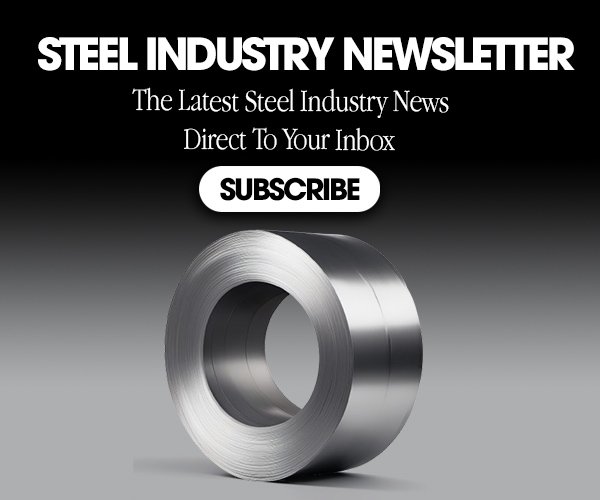President Donald Trump’s announcement of a 25% tariff on automotive imports, set to take effect on April 2, 2025, has reignited debates about trade policy, economic nationalism, and the future of North American manufacturing. The proposed tariffs—targeting vehicles and parts from Mexico, Canada, the European Union, and other trading partners—threaten to disrupt deeply integrated supply chains, raise consumer prices, and trigger retaliatory measures from allied nations. This policy shift comes amid a broader protectionist agenda that includes reciprocal tariffs, steel and aluminum levies, and sector-specific duties on semiconductors and pharmaceuticals. With automakers warning of plant closures, job losses, and production delays, the ripple effects of these tariffs could redefine global trade dynamics.
The April 2 Tariff Announcement: Scope and Timing
A Strategic Delay with Economic Consequences
President Trump initially planned to impose auto tariffs on April 1 but delayed the move by one day, citing superstition about April Fools’ Day16. This seemingly minor adjustment underscores the administration’s unpredictable approach to trade policy. The tariffs will apply to all imported vehicles and auto parts, with Mexico and Canada—the U.S.’s largest automotive trading partners—facing immediate repercussions. In 2024 alone, 76% of Mexico’s 3.5 million vehicle exports went to the U.S., while Canada shipped 93% of its automotive production southward12.
The delayed implementation provides a narrow window for automakers to adjust procurement strategies, though industry leaders argue that even a short-term tariff regime could cripple production. Ford CEO Jim Farley warned that prolonged tariffs would “wipe out” profits and force “major strategy shifts,” including relocating manufacturing plants to the U.S.8. However, building new facilities is a multi-year process, leaving companies vulnerable to immediate cost spikes.
Economic Impact: Costs, Jobs, and Consumer Prices
Rising Vehicle Prices and Shrinking Profit Margins
A 25% tariff on imported vehicles could raise the average price of a $25,000 car by $6,250, according to S&P Global Mobility8. This increase would disproportionately affect budget-conscious consumers and exacerbate inflationary pressures. However, the impact extends beyond sticker prices: domestically assembled vehicles reliant on foreign components—such as engines, transmissions, and electronics—would also face higher production costs. The Peterson Institute for International Economics (PIIE) estimates that similar tariffs in 2018 would have cost 195,000 U.S. jobs and reduced auto industry output by 1.5%4.
The Domino Effect on Employment
Automotive manufacturing supports 10 million U.S. jobs directly and indirectly, with many concentrated in Midwestern states critical to Trump’s political base24. Tariffs risk triggering layoffs not only at assembly plants but also at parts suppliers, logistics firms, and dealerships. Flavio Volpe of Canada’s Automotive Parts Manufacturers’ Association predicts “closures of plants all over the U.S.” if tariffs persist, as cross-border part shipments become prohibitively expensive2.
Industry Reactions: Automakers Brace for Disruption
North American Integration Under Threat
The U.S.-Mexico-Canada Agreement (USMCA), designed to incentivize regional production, now faces irrelevance due to overlapping tariffs6. Ford, which built over 220,000 vehicles in Mexico in 2024, relies on Mexican factories for affordable labor and specialized components1. Similarly, General Motors and Stellantis operate intricate supply chains spanning all three nations. Tariffs would force these companies to either absorb costs—eroding already thin profit margins—or pass expenses to consumers, potentially reducing sales.
Foreign Competitors Gain an Edge
Paradoxically, Asian and European automakers with limited U.S. exposure could benefit from the tariffs. Honda, Toyota, and Hyundai—which import fewer vehicles from Mexico and Canada—might exploit price disparities to gain market share. Ford’s Farley criticized this imbalance, calling tariffs a “bonanza for our import competitors”8.
Historical Context: From Steel to Semiconductors
Lessons from Previous Tariffs
The Trump administration’s 2018 steel and aluminum tariffs offer a cautionary tale. While intended to revive domestic metal production, those levies raised material costs for automakers by $5.6 billion annually, negating the benefits of corporate tax cuts15. The proposed auto tariffs dwarf earlier measures in scale, covering $471 billion in annual imports (including $214 billion in passenger cars)6. Sector-specific duties on semiconductors (25%) and pharmaceuticals (25%) further complicate supply chains, though their implementation timelines remain unclear5.
Global Responses: Retaliation and Negotiation
EU and Mexico Mount Diplomatic Offensives
European Trade Chief Maros Sefcovic arrived in Washington on February 19 to negotiate tariff exemptions, citing the EU’s 10% duty on U.S. vehicles—four times higher than America’s 2.5% rate5. However, Trump dismissed these talks, claiming EU officials had already agreed to lower tariffs (a claim Brussels denies)5. Meanwhile, Mexican President Claudia Sheinbaum plans high-level meetings with U.S. officials to address border security concerns linked to tariff delays6.
The Risk of a Transatlantic Trade War
If negotiations fail, the EU has threatened targeted tariffs on $39 billion of U.S. goods, including agricultural products and machinery. Such retaliation would strain NATO alliances and undermine cooperative efforts on issues like climate change and China’s trade practices.
Future Implications:
Impact on the U.S. Steel Industry: A Double-Edged Sword
The proposed 25% tariff on automotive imports could have significant implications for the U.S. steel industry, given the automotive sector’s substantial consumption of domestically produced steel. Industry experts estimate that the automotive sector accounts for 25% to 30% of domestic mill production, varying by producer4. This intricate relationship between the automotive and steel industries means that any policy affecting one will inevitably impact the other.
Potential Benefits for U.S. Steel Producers
Initially, the tariffs could provide a boost to U.S. steel producers:
- Increased Demand: As imported vehicles become more expensive, there may be a shift towards domestically produced cars, potentially increasing demand for U.S.-made steel.
- Price Increases: The tariffs would likely boost steel prices, benefiting U.S. producers5. This could lead to higher profit margins for steel companies.
- Job Creation: The steel industry, which currently employs about 140,000 workers, might see job growth as production increases to meet domestic demand5.
Challenges and Unintended Consequences
However, the impact on the steel industry is not uniformly positive:
- Reduced Overall Demand: If auto sales decline due to higher vehicle prices, it could lead to a decrease in overall steel demand. A typical car contains about 1,000-2,000 pounds of steel, costing between $7,000 to $14,000 per vehicle 3.
- Supply Chain Disruptions: The automotive industry relies on a complex, international supply chain. Disruptions could lead to production slowdowns, indirectly affecting steel demand.
- Retaliatory Measures: Other countries might impose retaliatory tariffs on U.S. steel exports, potentially hurting U.S. steel producers who rely on international markets.
- Long-Term Industry Health: While tariffs might provide short-term benefits, they could hinder the long-term competitiveness of both the auto and steel industries by insulating them from global competition.
Steel Industry’s Delicate Balance
The U.S. steel industry finds itself in a precarious position. On one hand, the United Steelworkers International has cautioned that placing tariffs on long-time trade partners like Canada may do more harm than good3. On the other hand, some in the industry expect the actions will curb imports and boost domestic production.
Ford’s situation exemplifies this complexity. While 90% of Ford’s steel comes from domestic sources, CEO Jim Farley noted that suppliers often have international sources for steel, meaning price increases could still affect production costs3.
Broader Economic Implications
The ripple effects of these tariffs could extend far beyond the steel and auto industries:
- Job Losses in Manufacturing: Research estimates that Trump’s 2018 tariffs led to the direct loss of 75,000 manufacturing jobs, with additional losses from retaliatory tariffs5.
- Consumer Costs: Higher steel prices could lead to increased costs across various industries, from construction to appliances, potentially raising prices for consumers5.
- Economic Inefficiency: The Peterson Institute for International Economics estimates that Trump’s 2018 steel tariffs cost taxpayers more than $900,000 each year for every job they saved or created5.
Long-Term Shifts in Manufacturing
To circumvent tariffs, automakers may accelerate investments in U.S. production. Tesla, Rivian, and other EV manufacturers—less reliant on overseas parts—could gain a competitive edge. However, legacy automakers like Ford and GM face steep transition costs. RBC Capital Markets analyst Tom Narayan warns that tariff-induced price hikes could delay the industry’s pivot to electric vehicles, as consumers prioritize affordability over sustainability8.
Policy Uncertainty and Strategic Planning
The auto industry’s 5–7-year product development cycles clash with the Trump administration’s ad hoc tariff announcements. Executives urge clearer guidelines to justify billion-dollar investments. Until then, contingency planning—such as stockpiling parts and diversifying suppliers—will dominate corporate agendas.
Conclusion: Navigating a New Era of Protectionism
President Trump’s auto tariffs aim to reshore manufacturing and reduce trade deficits. While the policy aligns with his “America First” ideology, its economic costs—higher prices, job losses, and strained alliances—could also be possible. Automakers must now choose between absorbing financial hits, relocating operations, or lobbying for exemptions. As the April 2 deadline looms, the only certainty is uncertainty, leaving global markets bracing for turbulence.
If you enjoyed this article check out some of our other recent articles on the subject:
- Nucor Increases Steel Prices Again
- Steel Industry and Manufacturing Demand: Understanding the Critical Decline in HVAC and Agricultural Equipment Sectors in 2025
- Steel Prices in November 2025: Market Dynamics, Price Drivers, and Industry Outlook
- The Dodge Momentum Index October 2025: Understanding Commercial Planning Momentum and Its Impact on Construction Spending
- Nucor Announces 3rd Weekly Price Increase: What’s Driving the Market and What It Means for Key Segments
Be sure to subscribe to the Steel Industry Email Newsletter for the latest steel news direct to your inbox!








